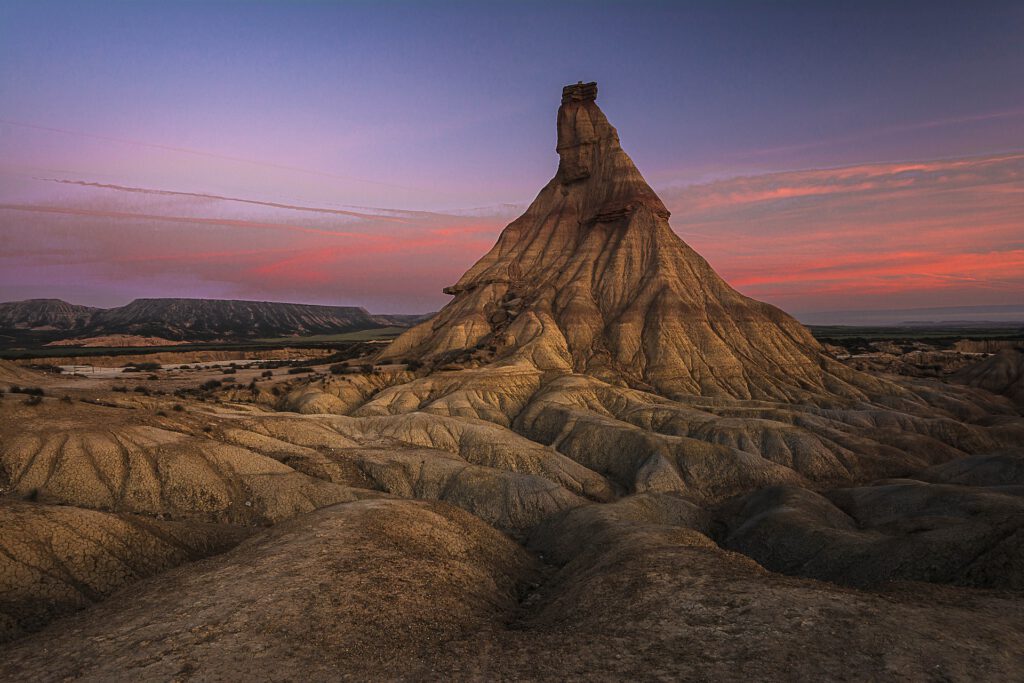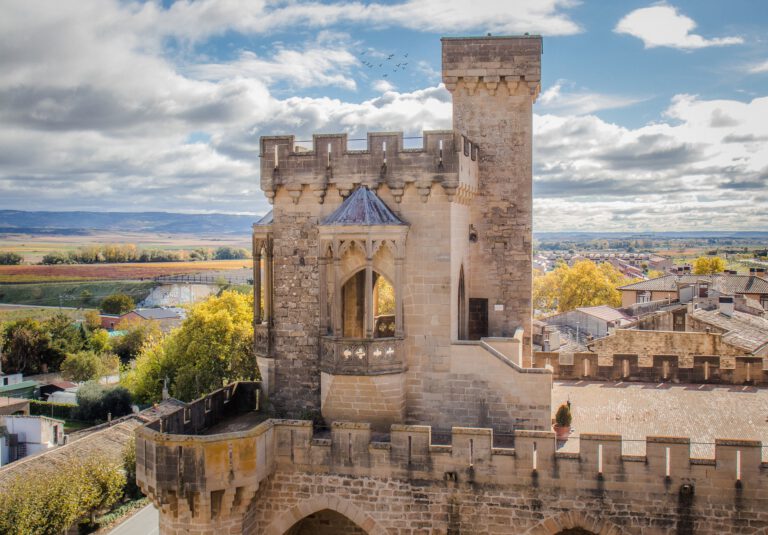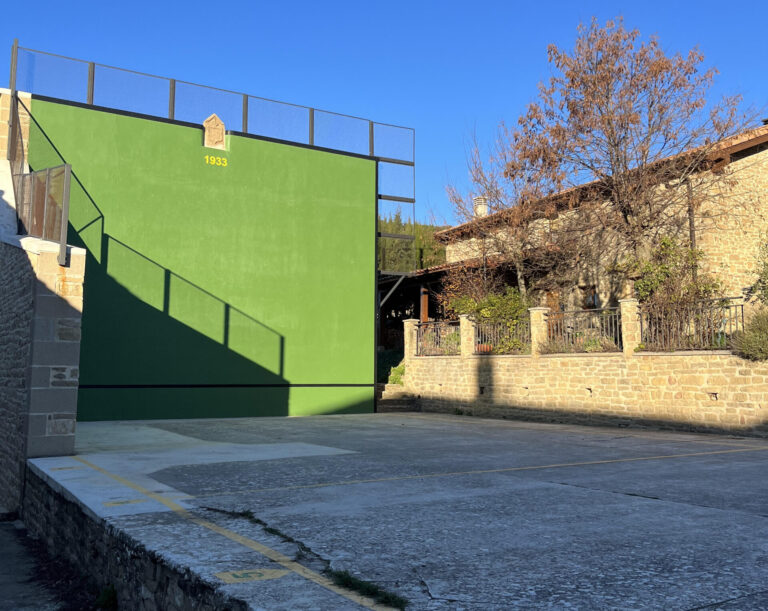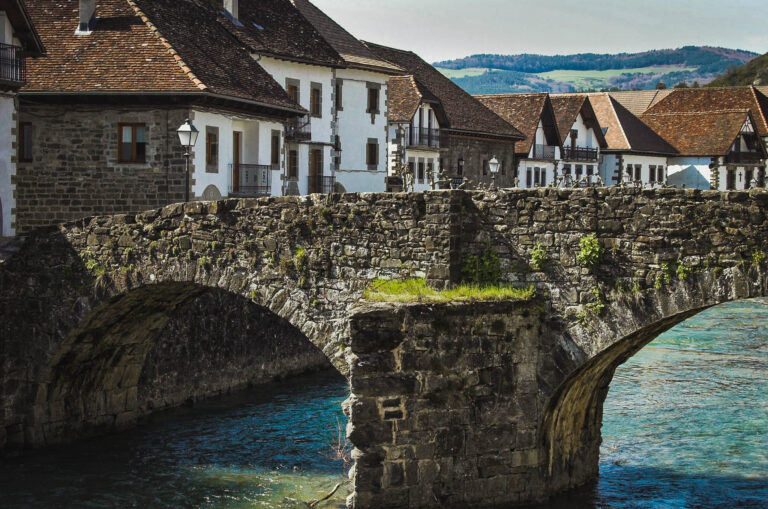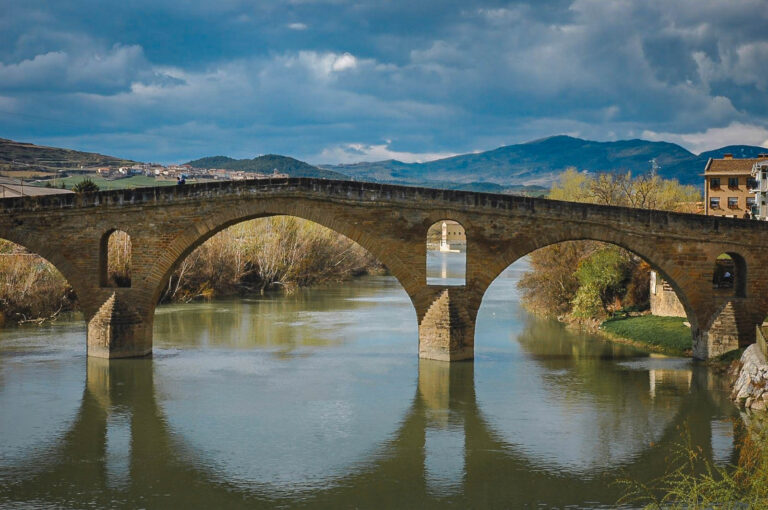Navarre may not be well known among tourists, but it is a beautiful region in the north of Spain that offers a perfect alternative to the hustle and bustle of the Spanish coast. Be enchanted by the picturesque landscapes of Navarre, where green valleys, vast vineyards and majestic mountains come together. Explore beautiful villages with narrow streets and centuries-old stone houses, where every corner tells a new story.
Whether you are looking for relaxation in the middle of nature, to dive into the rich history, or simply to enjoy delicious food, Navarra has it all. If your visit to Navarra is short, discover Navarre in 1 day or Navarre in 3 days.
If you want to know what to see and do in Navarra, below you will find a list of the top 13 sights in Navarra that you must visit when you are in Navarra.
13. Javier Castle
The Castle of Javier is considered one of the most important castle fortresses in Navarra. It served for many years as the defense of the Kingdom of Navarra. It was in this castle that San Francisco Javier (“Saint Francis Xavier”) was born on April 7, 1506. He lived in the castle until he was 19 years old.
The castle can be visited from the inside with a guided tour or on your own. There is also a museum inside with objects from the old castle and three-dimensional exhibits about the life of San Francisco Javier.
Since prayers to San Francisco Javier helped overcome a cholera epidemic in Navarra in 1886, pilgrimages are held every year by thousands of people from all over Navarra. These are usually held on the first two weekends of March and are also known as the Javieradas.
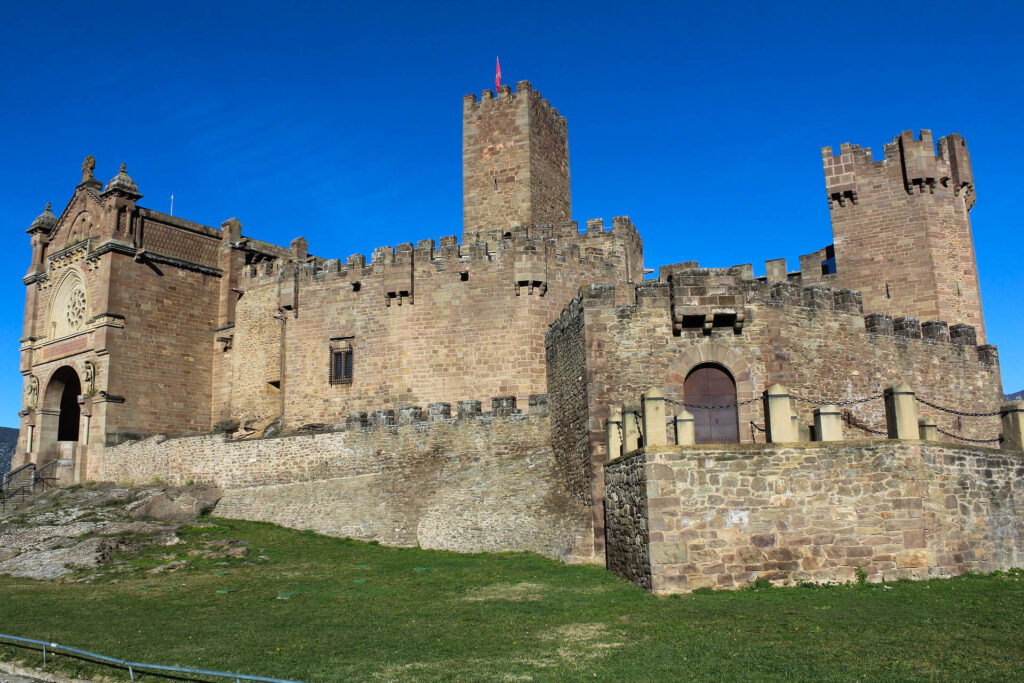
12. Artajona
Artajona is a small village completely surrounded by medieval towers and fortified walls, known as El Cerco de Artajona ("The Enclosure of Artajona"). This wall was built in the 11th century, which served to protect the Kingdom of Navarre.
At just 4 kilometers from Artajona, there are the dolmens of Portillo de Eneriz and of Mina de Faranagortea. These are two of the rare examples of gallery tombs with perforated doors, a specific tomb architecture typical of several areas around the western Mediterranean.
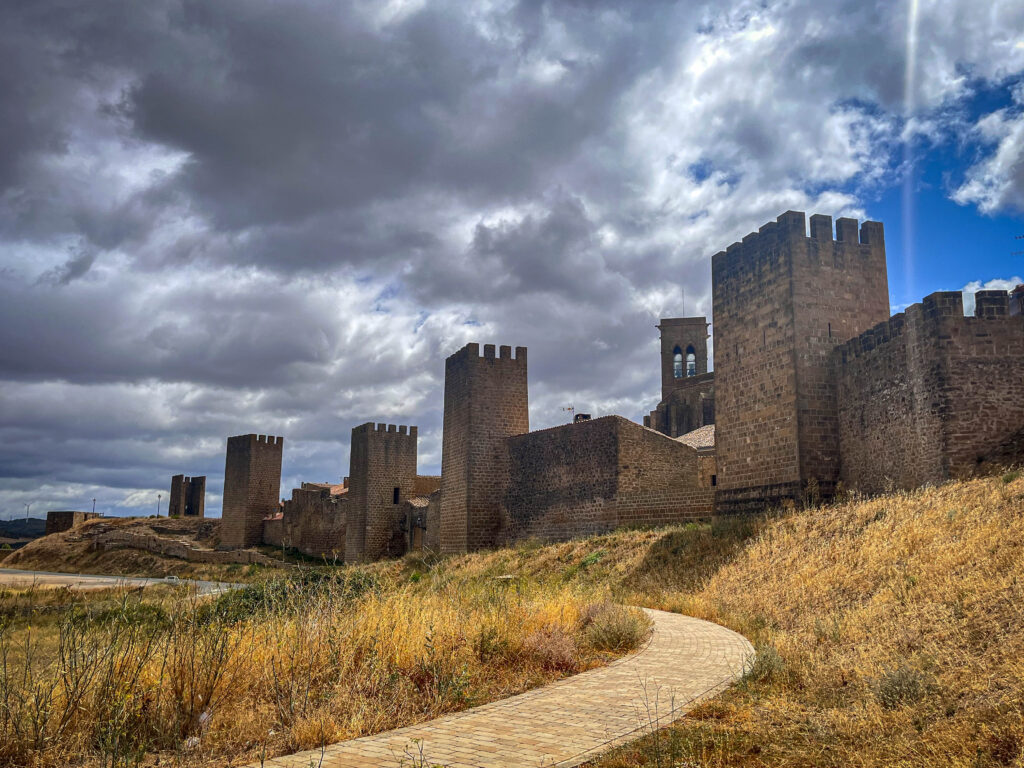
11. Urbasa-Andía Natural Park
The Urbasa-Andía Natural Park is a beautiful natural area known for its varied landscapes and impressive geological formations. The park is also home to a rich biodiversity, with vast beech forests covering approximately 60% of the area, and diverse animal species such as wild boars, roe deer and various birds of prey. In addition, there are numerous archaeological sites, including dolmens and menhirs, which bear witness to human presence since prehistoric times.
In 1997, this nature park was declared a nature reserve. The highest point of the Urbasa-Andía Natural Park is the mountain of San Donato (1,489 meters), which is crowned with a hermitage.
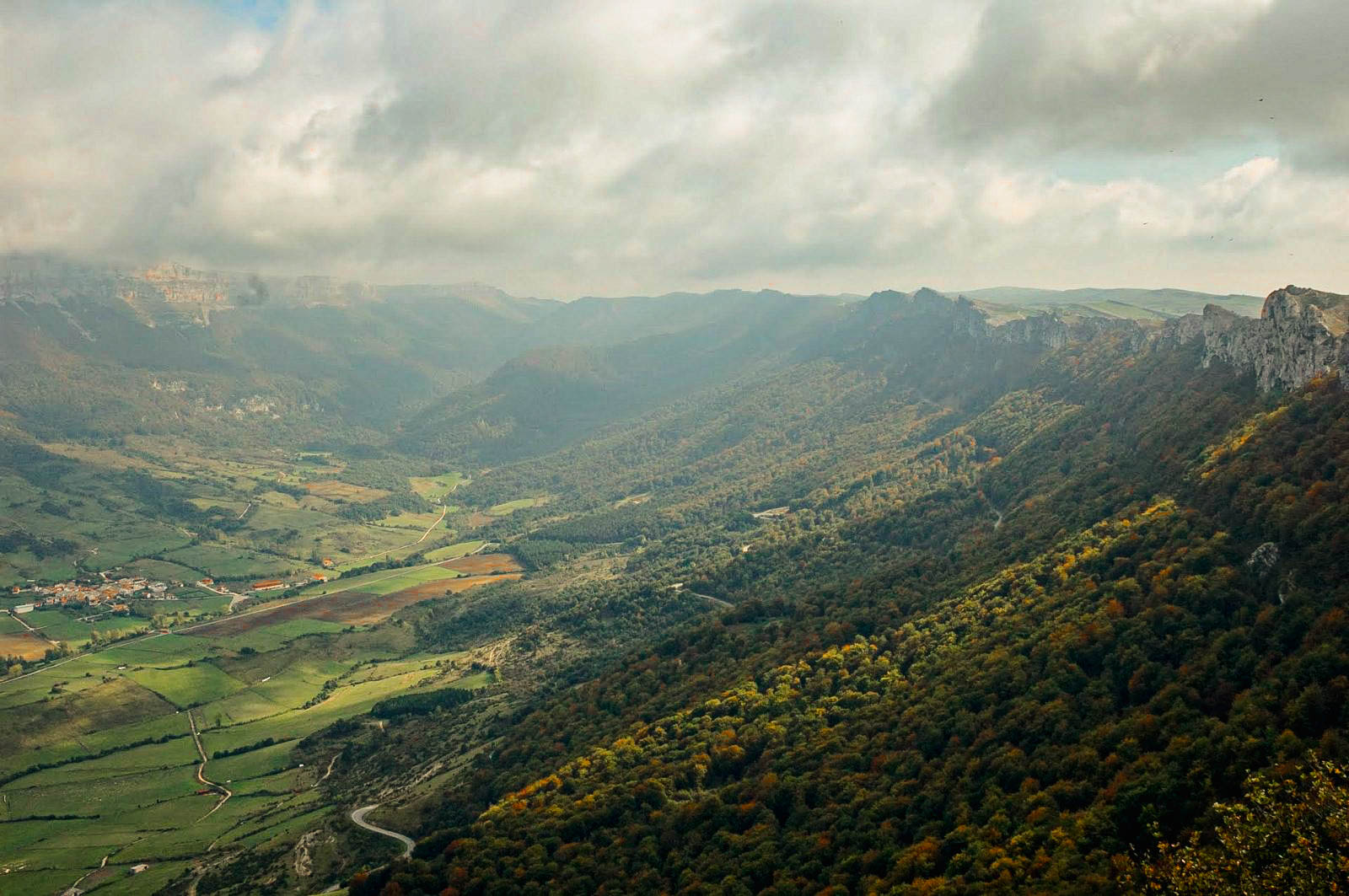
10. Puente la Reina
Puente la Reina was founded in the 12th century to populate the regions around the pilgrim route of the Camino de Santiago. A walk through this village takes the walker back to the Middle Ages. If there is one thing characteristic of Puente la Reina, it is the famous Romanesque bridge over the Arga River, on the outskirts of the village.
The temple of Puente la Reina is located a few kilometers from Puente la Reina Santa Maria de Eunate, an important temple for the Knights Templar. This temple served as protection for pilgrims walking the Camino de Santiago.
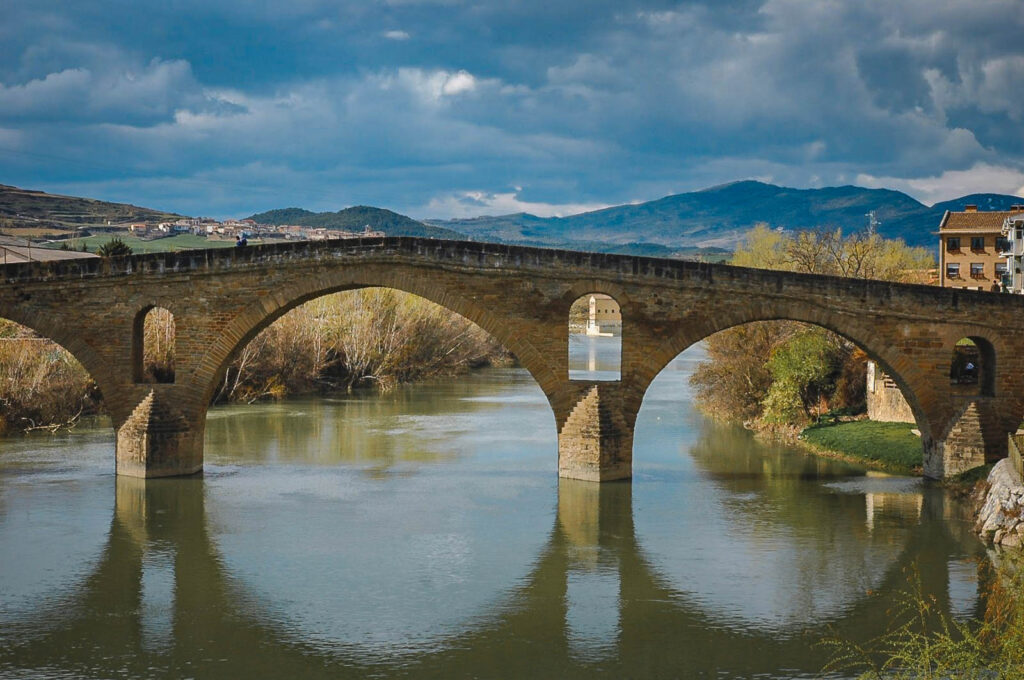
9. Forest of Irati
The Selva de Irati (“Forest of Irati”) is the second largest and best preserved beech and pine forest in Europe, after the Black Forest in Germany.
Every season of the year offers something unique in the Irati Forest. In spring, the forest comes to life with the fresh green of new leaves and blooming flowers. The summer months invite you to take walks along the winding paths and cool off by the banks of the Irati and Urbeltza rivers. In autumn, the forest turns into a stunning color spectacle. The leaves change into brilliant shades of red, yellow, and orange. Even in winter, the Irati Forest has its charm. The snow-covered landscapes create the perfect setting for winter activities like cross-country skiing and snowshoeing.
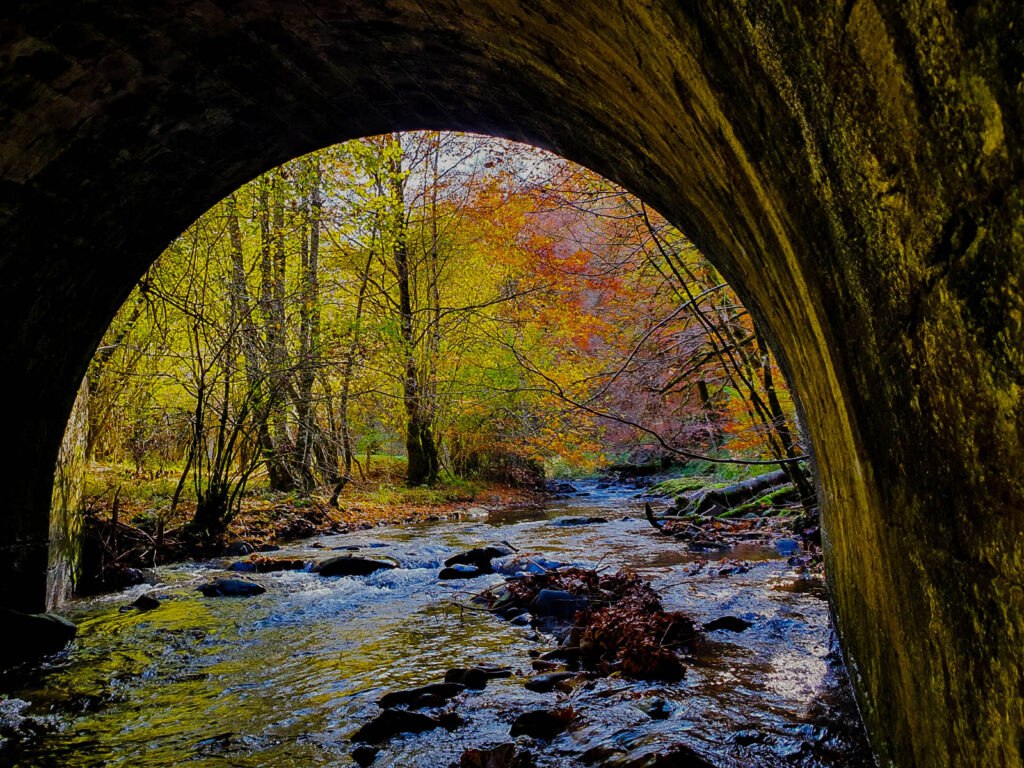
8. Pamplona
Pamplona or Iruña (in Basque) is the capital of Navarre. Among tourists, Pamplona is mainly known for the San Fermín festivals. But Pamplona is also a lovely city to visit outside of these busy celebrations. Pamplona offers many beautiful spots and buildings that can be visited in just one day.
The San Fermín celebrations, also known as the Sanfermines, are an annual festival that takes place in Pamplona. The Sanfermines are especially known for it non-stop partying, where people party both at night and during the day. It is tradition to wear white and red clothing during these celebrations, with most people wearing a white shirt and pants with red accessories.

7. Ochagavía
Ochagavía is a picturesque village near the Pyrenees, with stone streets and a natural setting, enriched with ancient traditions that help preserve the essence of the life of its ancestors. In addition to the traditional houses and various bridges along the Anduña river, the religious architecture is also remarkable.
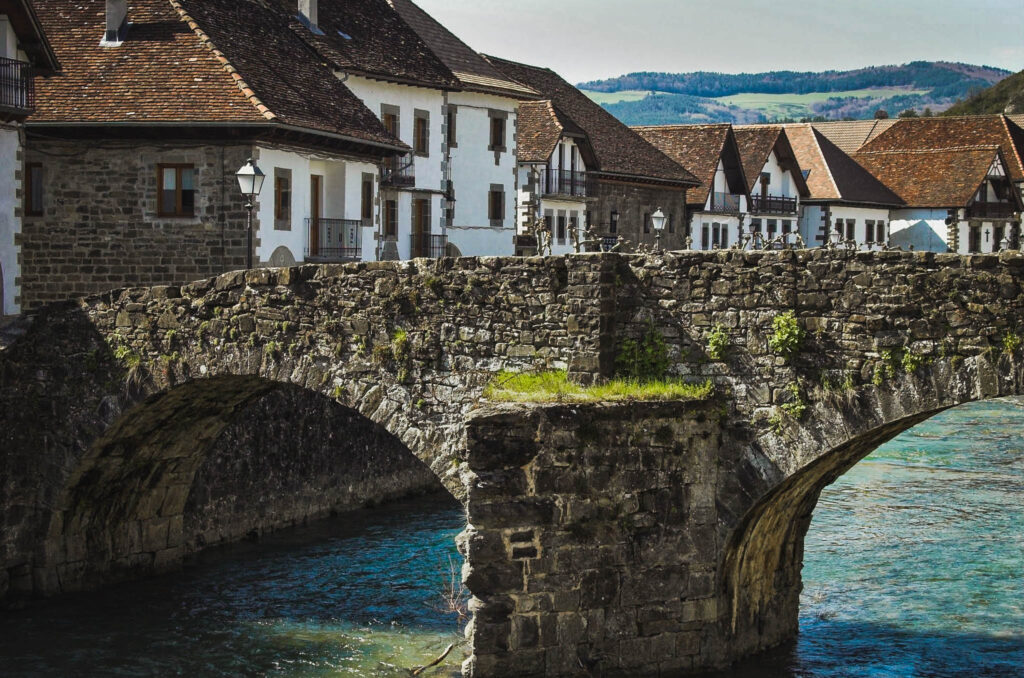
6. Ujué
Ujué is a beautiful medieval village and is listed among the Los Pueblos más Bonitos de España (“The Most Beautiful Villages in Spain”). With its steep, labyrinthine streets, Ujué also houses one of the most important monumental buildings of medieval architecture in Navarra: the Santa María sanctuary-fortress. Inside this fort lies the precious treasure of both the people of Ujué and many from Navarra: the sculpture of the Holy Virgin of Ujué.
A special day in Ujué is the Day of the Migas, which is celebrated annually on the third Sunday of September. Migas is a traditional dish with humble origins. In the past, it was made with stale bread, lamb fat, garlic, water and salt. Nowadays, more ingredients are used, such as tomatoes, Serrano ham and mushrooms, achieving a perfect combination of flavours, colours and aromas.
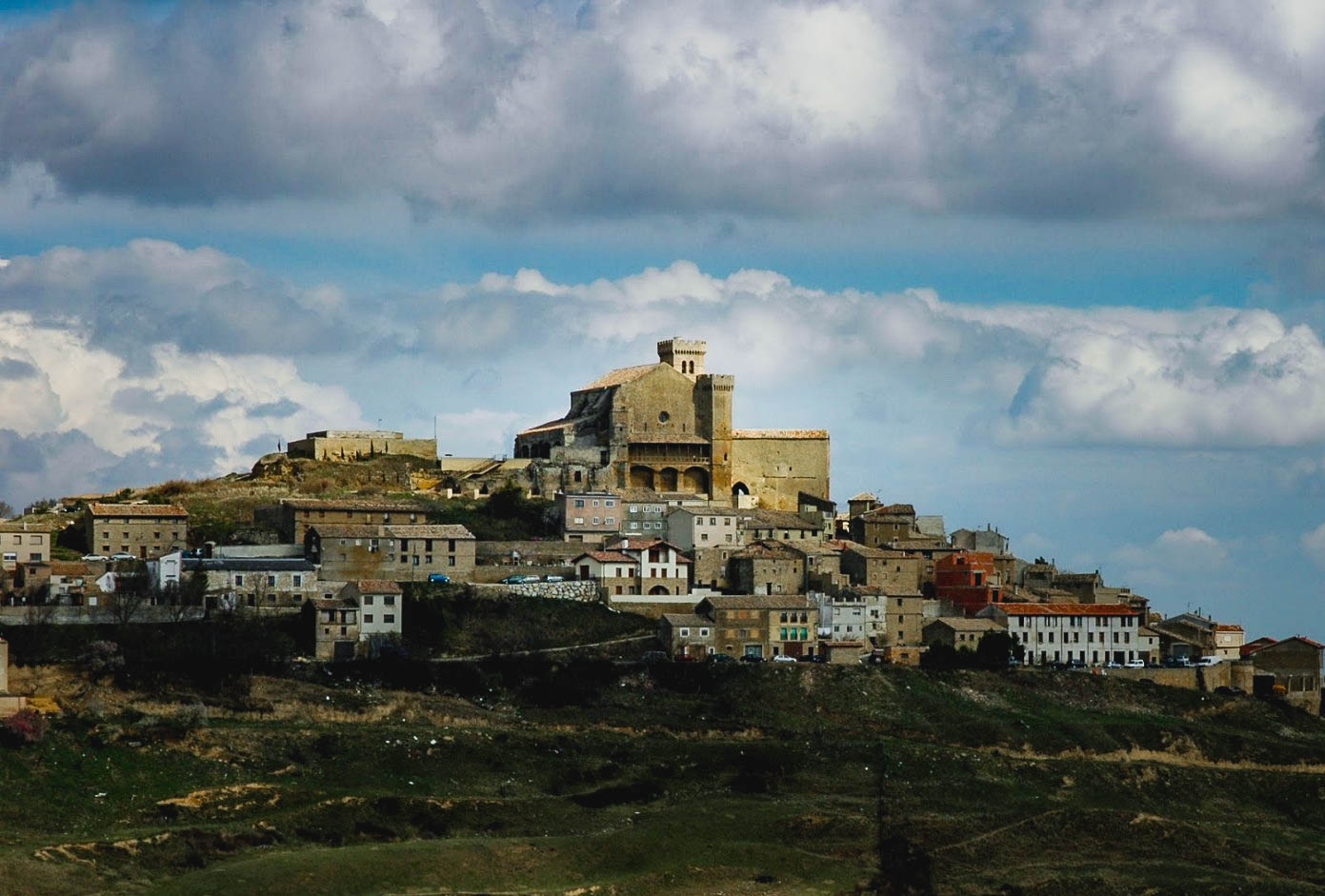
5. Baztan
The scenic region of Baztán is located in the north of Navarra. It is famous for its beautiful landscapes, lush forests, winding rivers and imposing mountains, but also for its rich history. One of the most important villages in the Baztán region is Elizondo, also the capital of this region. The village of Elizondo is characterized by its beautiful streets with the typical white houses.
Also, in Baztán is the famous Xorroxin Waterfall. The walk to the waterfall is perfect for relaxing with the whole family.
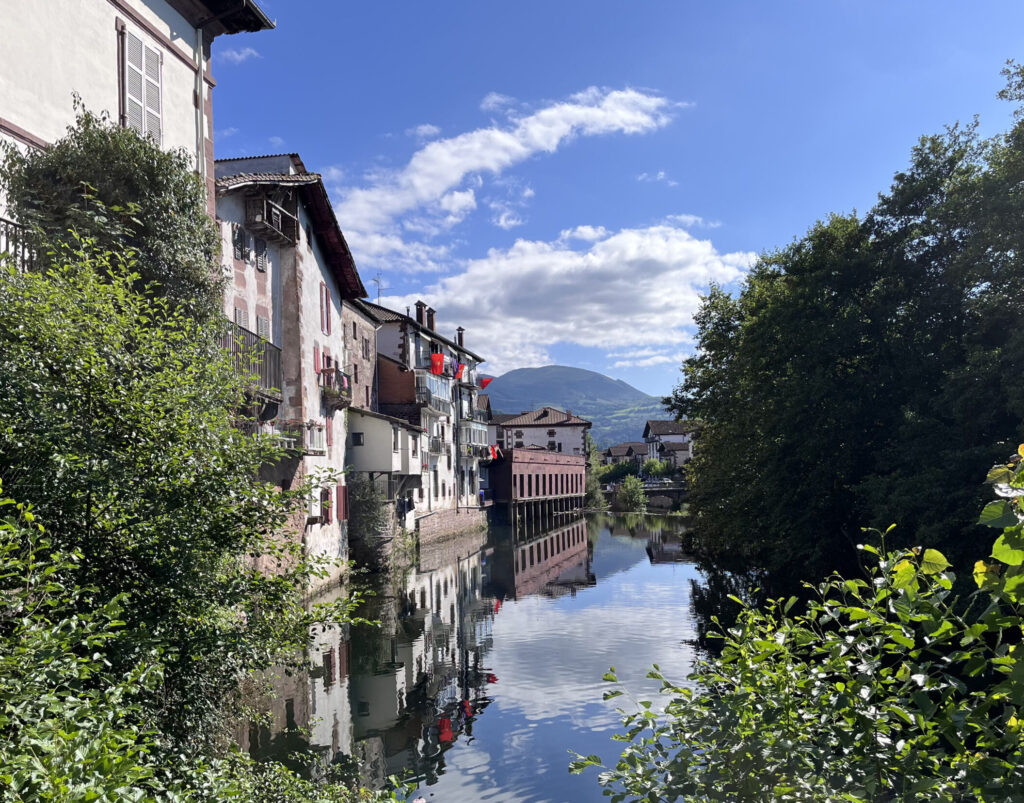
4. Foz de Arbayún and Foz de Lumbier
The Foz de Arbayún (“Arbayún Gorge”) and the Foz de Lumbier (“Lumbier Gorge”) are two spectacular gorges in eastern Navarra. The beauty of Foz de Arbayún can be admired from various spots. To fully appreciate the grandeur of this area, the best option is to drive to the Iso viewpoint. This viewpoint is easily accessible by car as it is located along the road.
Although the Foz de Lumbier is less spectacular than the Foz de Arbayún, it is more popular. The reason for this is that Spain's first electric train ran along this route between 1911 and 1955. The development of new train routes led to the closure of this route, but the memory remains visible in the so-called Via Verde (“Green Way”).
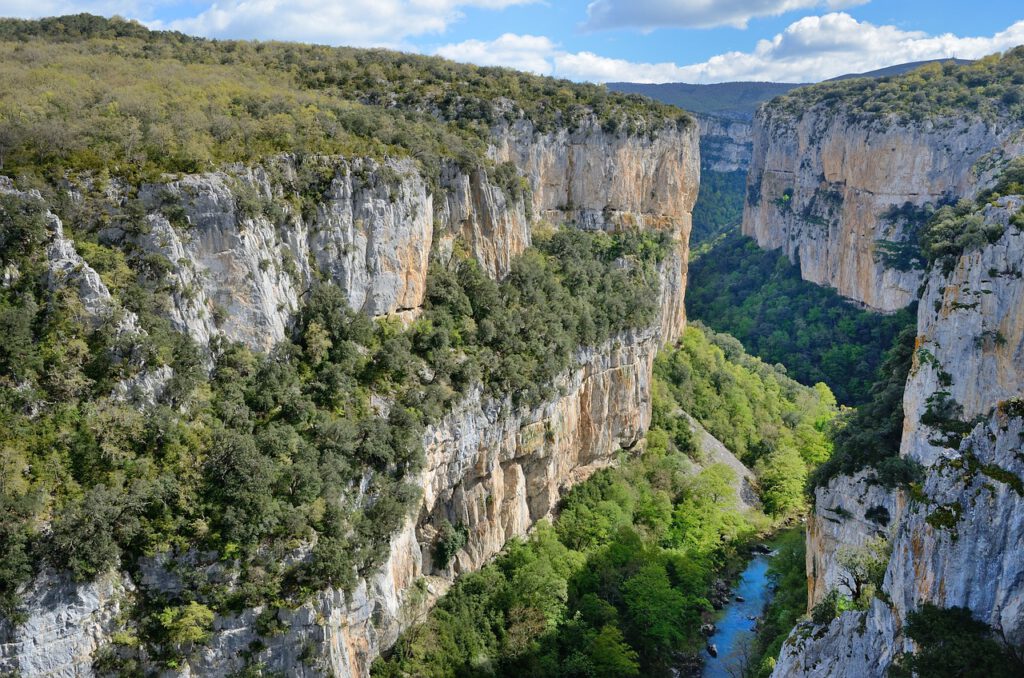
3. Olite
Olite is a small town about 35 minutes drive from Pamplona, the capital of Navarre. This is where one of Navarra's most popular tourist attractions is located Royal Palace of Olite. In addition, Olite has beautiful medieval streets and buildings, tasty restaurants and many wineries that can be visited.
Olite is also known as the wine capital of Navarra. At the beginning of September, the big festival, the Fiesta de la Vendimia (“Grape Harvest Festival”), takes place. A tradition during this festival is that some young people stomp the grapes with their feet, after which there is an opportunity to taste different types of wines.

2. Source of Urederra
The source of the Urederra river (“Nacedero del Urederra”) is an idyllic spot, as the name suggests (in Basque, “Ur” means water and “eder” beautiful). It springs from the bowels of the earth and is especially known for its striking turquoise water. The water leaves behind a spectacular path of raging waterfalls and calm pools.
Visitors can enjoy walks along well-marked trails that wind along the riverbank. These trails also offer beautiful views of the waterfalls and pools. It is an ideal place for nature lovers, hikers and photographers who are looking for peace and the natural beauty of the area.
The walk is surrounded by a very diverse flora, such as beech, oak, elm and maple. There is also a rich fauna, with many species of birds and fish.
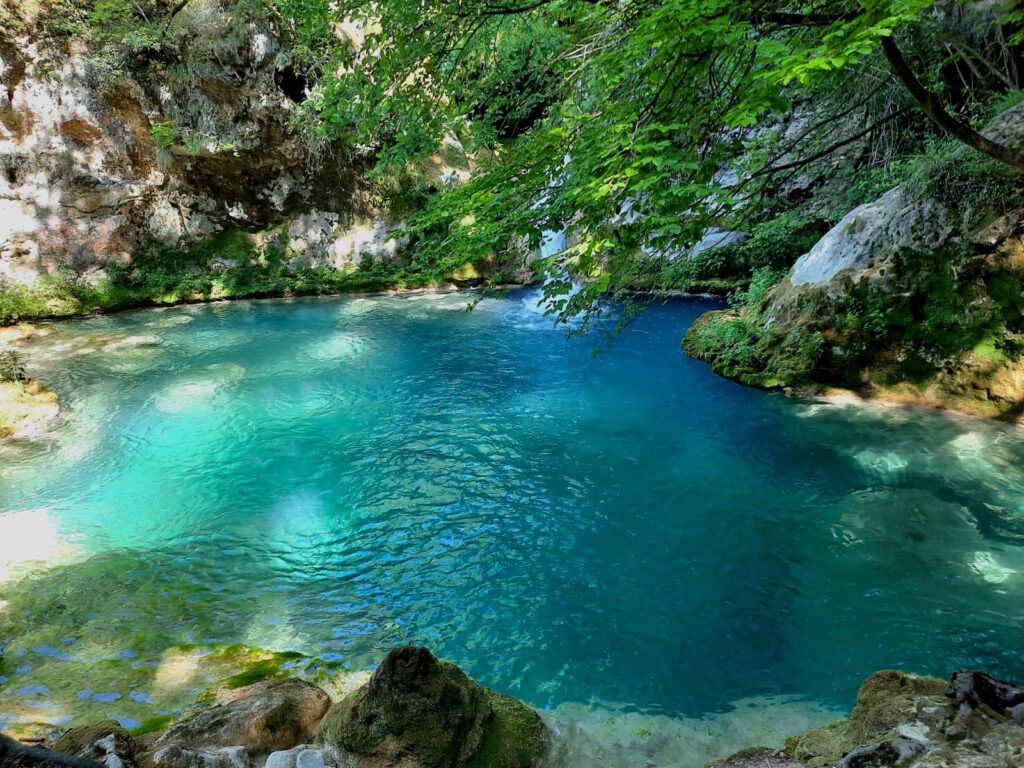
1. Bardenas Reales
The Bardenas Reales is a semi-desert in the southeast of Navarra. It is one of the most popular attractions in Navarra due to the enchanting ravines and plateaus that look almost lunar. In the year 2000, UNESCO declared the Bardenas Reales a biosphere reserve. In recent years, it has become more popular among tourists due to its appearance in the TV series Game of Thrones.
The Bardenas has over 700 kilometers of paths for the enjoyment of nature lovers. Many companies offer tours through this magical place, with the possibility to explore the Bardenas by segway, 4×4 off-road vehicles, buggies or quads, and even on horseback. It is also possible to rent (electric) mountain bikes and 4×4 off-road vehicles from these companies.
Near the Bardenas is also Senda Viva, an amusement park that combines thrilling attractions and various species of animals. It is the largest family recreation park in Spain.
